Daido Moriyama
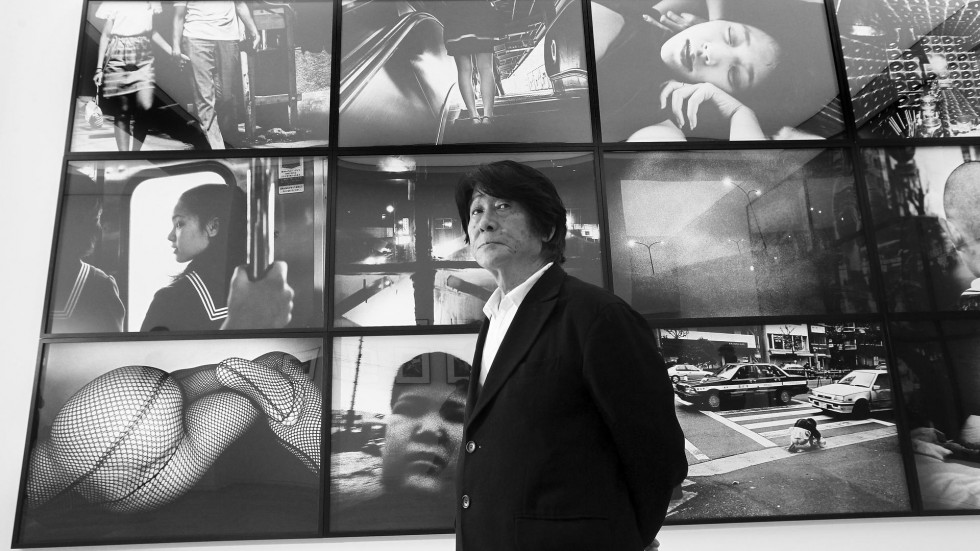
Daidō Moriyama (Ikeda, October 10, 1938) is a Japanese photographer, considered one of the leading exponents of Japanese street photography. Among the works for which he is most famous is Eros, published in 1969 in the Japanese magazine Provoke, which shows images of a night spent with a lover in a hotel room. He has also exhibited his work in museums and galleries around the world, including the Tate Modern in London, MoMA in San Francisco, the Metropolitan Museum of Art in New York, and the Fondation Cartier in Paris.
Born in Ikeda, Osaka, Moriyama initially studied to become a graphic designer before becoming fascinated by the world of photography and studying with Takeji Iwamiya. In 1961 he moved to Tokyo to meet the members of VIVO, and became an assistant to Eikoh Hosoe, a position that allowed him to gain access to the photographic world of Tokyo.
In 1968 he produced the collection of photographs Nippon gekijo shashincho, in high contrast, in which he focused on a world now contaminated by industry. In this same period he began to be part of the magazine Provoke, attracting the attention of young artists, most of whom were photographers. In addition to Provoke, Moriyama later contributes to other magazines, such as Camera Mainichi, Asahi Journal, and Asahi Camera.
His photographic collections are numerous and include “Hikari”, “Karyudo” and “Nakaji eno tabi”.
In the seventies, Moriyama encountered personal problems and, for this reason, was no longer as productive as in previous years. It was only in the early eighties that he resumed his activity with greater constancy and even obtained the award of photographer of the year from the “Shashin Kyokai” (Society of Photography).
He has exhibited in several art galleries, such as the Museum of Modern Art (MoMA) in San Francisco in 1999 and the Museum of Modern Art in New York in 1974.
Moriyama lives and works in Tokyo.
Moriyama is known for his raw, gritty gaze, his portrayal of Japan’s dark underbelly in the post-war era. His early career coincided with the seismic cultural changes in that country as it struggled to cope with the devastation wreaked by the bombings of Hiroshima and Nagasaki. Moriyama voraciously devoured and regurgitated what he saw – not always intrusively, but there has certainly always been something predatory about his photography. This comes at his own admission; indeed, one of his famous, early books of 1972 is called “Hunter”. In his ceaseless wandering and photographing – in the repetition – we see the artist’s faith in the journey; the idea that by virtue of searching and looking, something will be found. Moriyama inherited this philosophy from Jack Kerouac’s “On the Road”. The Tights – with their stark, abstracted lines – stand apart from his grainy, chiaroscuro street photography. Yet the sentiment behind the pictures is the same: a desire to observe and preserve the everyday details that are so often overlooked. He sees things we don’t see. So much so that with many of the Tights pictures it is not immediately clear what one is looking at – until you notice the soft curve of the thigh, the slender ankle or the inconspicuous line of the white knickers. The images are erotic and dramatic in their subtlety.
” THE CRUSHING FORCE OF TIME IS BEFORE MY EYES, AND I MYSELF TRY TO KEEP PRESSING THE SHUTTER RELEASE OF THE CAMERA.
IN THIS INEVITABLE RACE BETWEEN THE TWO OF US, I FEEL I AM GOING TO BE BURNT UP “
DAIDO MORIYAMA
Light and Shadow
Polaroid in Gallery
“Bye – Bye Polaroid” 2008,
10,1 x 10,3 cm (4 x 4 inches)
Preserved in the original vintage plexiglass box 11x11x2 cm
Sign at the front Daido

01

02
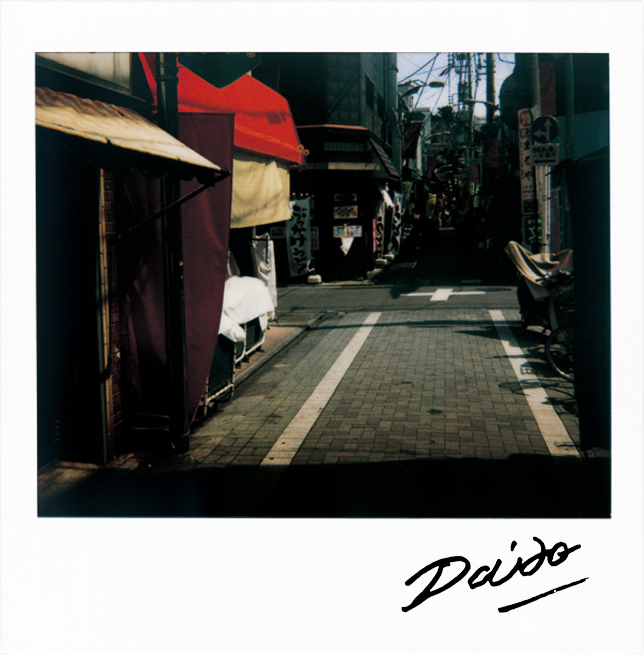
03
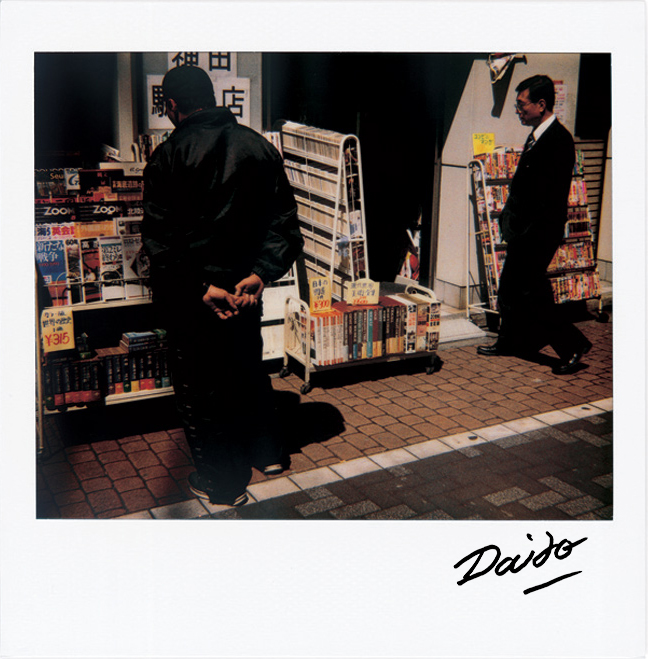
04

01
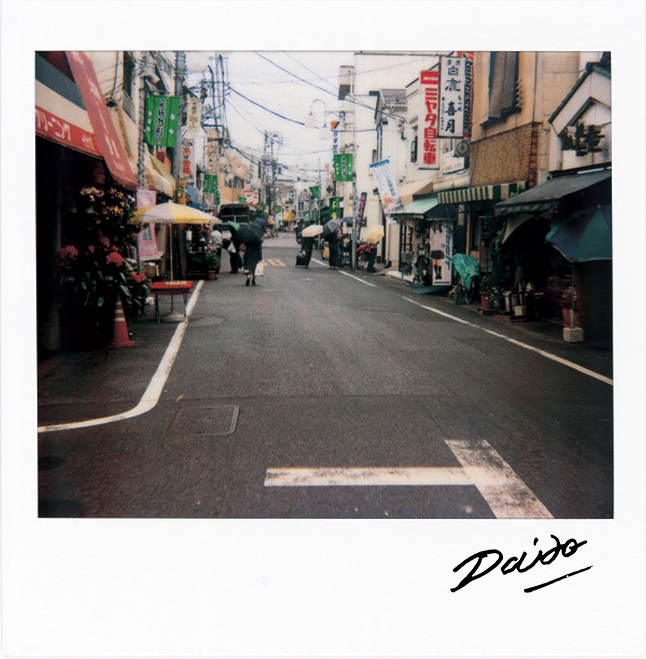
02
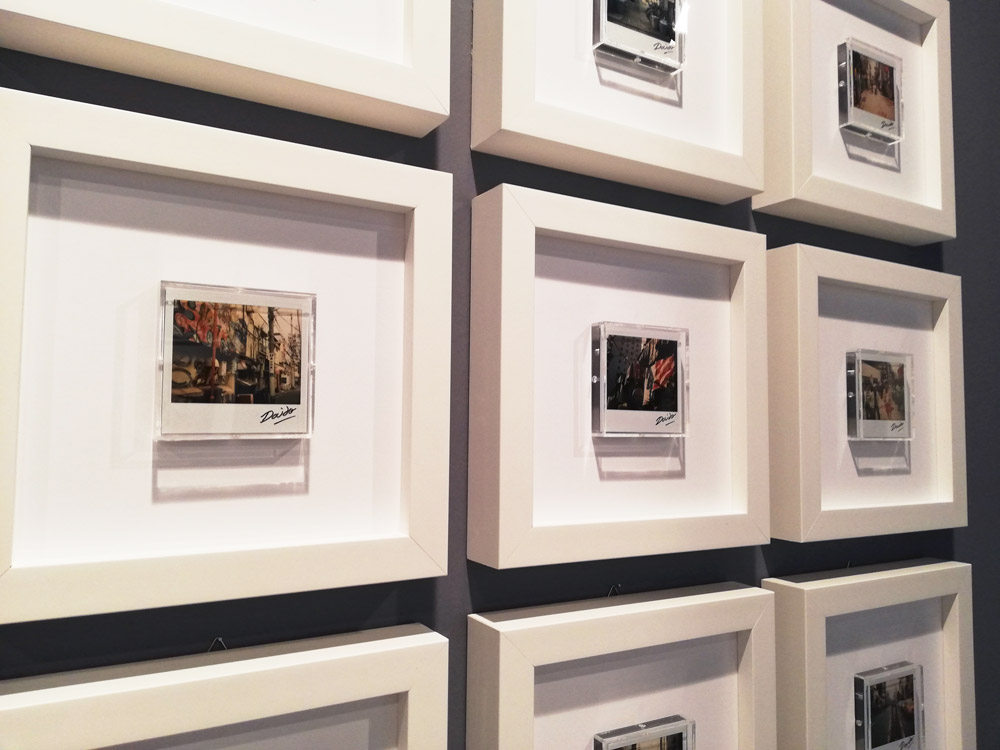
It is an endless daily quest that drives Moriyama to take thousands and thousands of shots, for years, for a lifetime. Images with contrasting whites and blacks, often blurred, scratched, overexposed or grainy, tracing the contours of an existence with no ties to a place of origin or constraints dictated by social conventions.
For Moriyama, every single thing that offers itself to his gaze is worthy of being photographed: it is not important who the subject is, nor who the author is, because there is no distinction between lived reality and the reality in the image – often photographs from magazines, posters, advertising, television are mixed in with those taken live. What matters is the fragment of experience, partial and permanent, that the photograph can find, that one truth that exists only at the point where the photographer’s sense of time and the fragmentary nature of the world meet.
Who is Daido Moriyama?
Artist Daido Moriyama – In Pictures | Tate
Memories of a Dog - The photographs of Daido Moriyama
"Daido Moriyama in Hong Kong in 2012" by Ringo Tang
MORIYAMA DAIDO: On Tokyo, On Woman
Daido Moriyama. World Visions
Japan: A Photo Theater
Moriyama’s interest in the world of theatre arose following a meeting in 1965 with the poet Shuji Terayama, with whom he began to follow several performances of touring companies that the writer was to review for Haiku magazine. Although the collaboration between the two ended shortly afterwards, Moriyama continued the project and began photographing numerous theatres, in Tokyo as well as in other cities in Japan. The best shots will be published a few years later in Camera Mainichi magazine under the title A Japan Photo Theatre. This first title will often be used by Moriyama as an overall indication of a long research, which over the years has seen images of theatres flanked by other photographs of ordinary life, streets and people. In the series, the theatre takes on an almost symbolic value and becomes a key to looking at everyday life, increasingly embedded in a system of consumption and entertainment.
A Hunter
From 1968 onwards, Moriyama’s work is increasingly permeated within the beat culture and the identity of the artist begins to be overlaid with the figure of the solitary, instinctive and aimless traveller, constantly in search of new roads to travel and new worlds to tell. On the subject of A Hunter, the large series within which the shots of this period and others that followed will converge, the artist says: “I once took a photograph entitled A Hunter, the idea is to go hunting for the reality in front of our eyes, for what is around us and what we have in front of us. This is my greatest stimulus and for me the act of photographing is nothing more than an instinctive reaction to this stimulus. It is a continuous back-and-forth between me and reality. In this way I see, know and participate in the social life around me.”
Lucky Artist
Over the years, Moriyama’s travels also extend beyond Japan, to the United States as well as throughout Asia. These images belong to two series taken in Shanghai and South-East Asia respectively, which the artist selected as his personal response to the question “are you a lucky artist?” posed by Fondazione Fotografia on the occasion of one of his exhibitions held in Modena in 2010. In an interview a few years ago, the artist said: ‘Many of the cities I have visited and that have remained in my memories, the lights I have found there, each one linked to its own different context of memory, intersect and reflect within me, waiting to awaken light and memory again. All these scattered lights and memories converge in a single point: that of history. Photography is the memory of light, it is the history of memory’.
About his work, Moriyama explains: ‘The reality projected before my eyes is almost all a mystery and that is why I investigate it. Within this enigma there are various facets: eroticism, pain, fun… There are many elements, the totality of which constitutes an infinite puzzle. Therein lies the reason for photography, in its ability to represent this intrigue, but without the duty or responsibility to reach a solution, to unravel the mystery. It is not possible to understand through one or a hundred photographs. Walking around the city for me is like walking through a labyrinth, and that is why I like it. I don’t want to offer any answers, I prefer to leave the question unresolved, to leave the question of what is in front of us hanging, even after looking at the pictures.”
